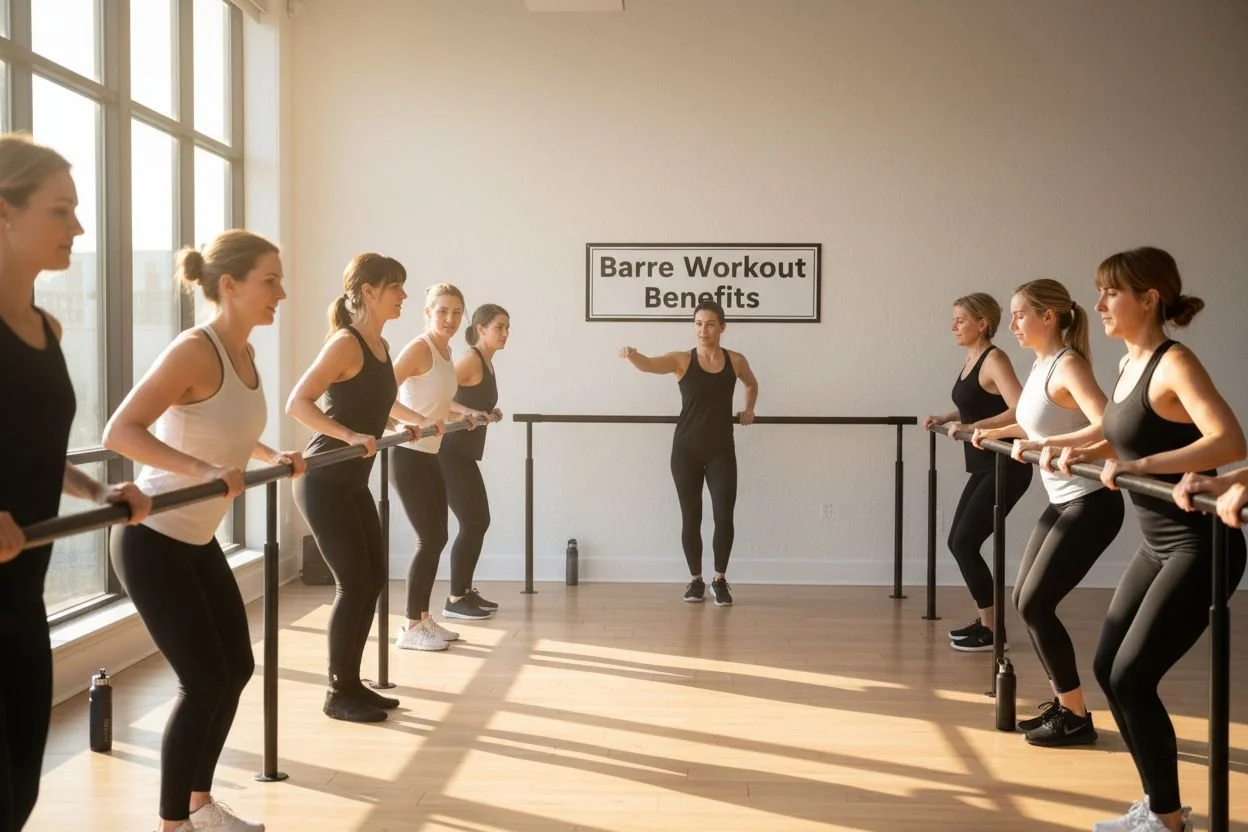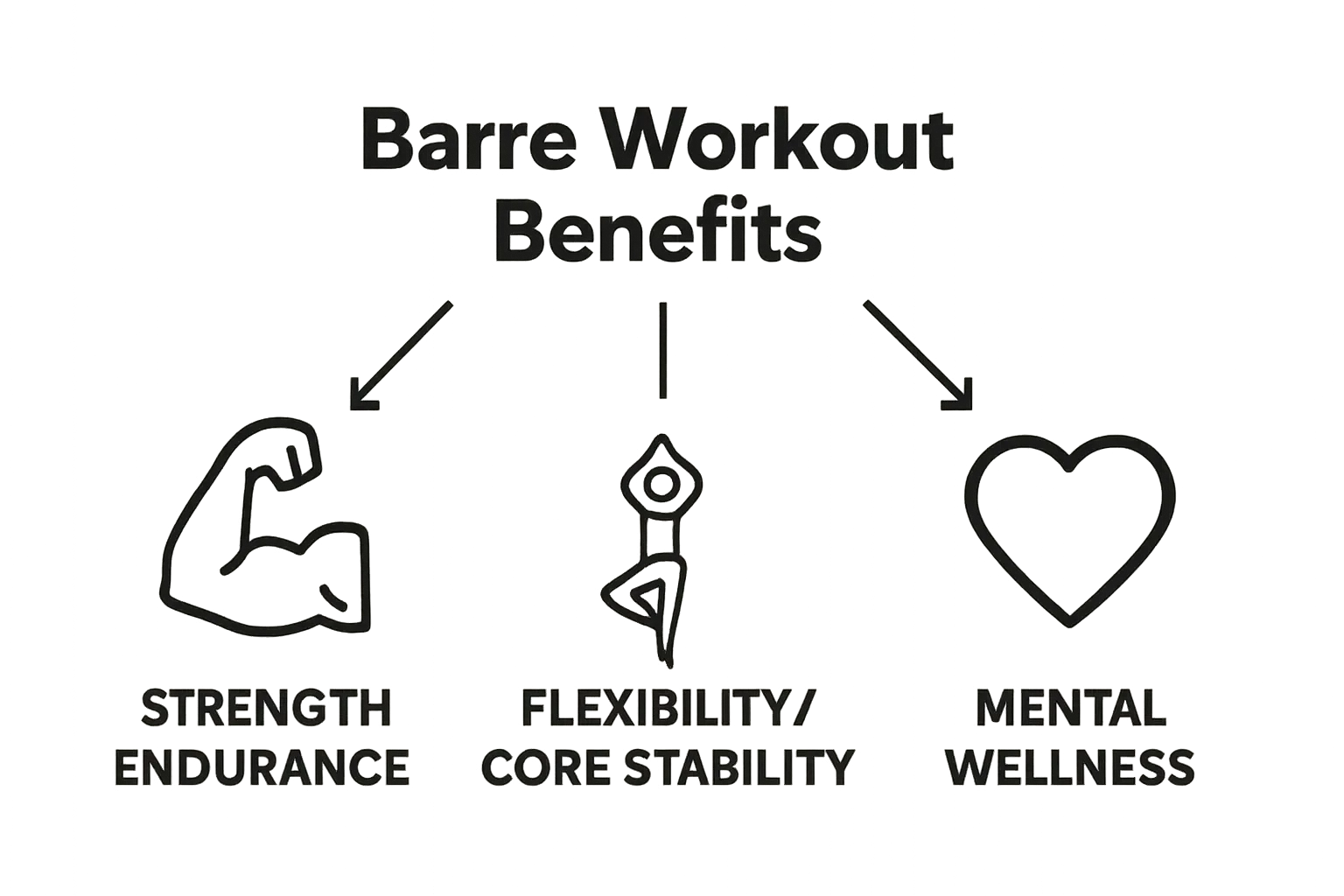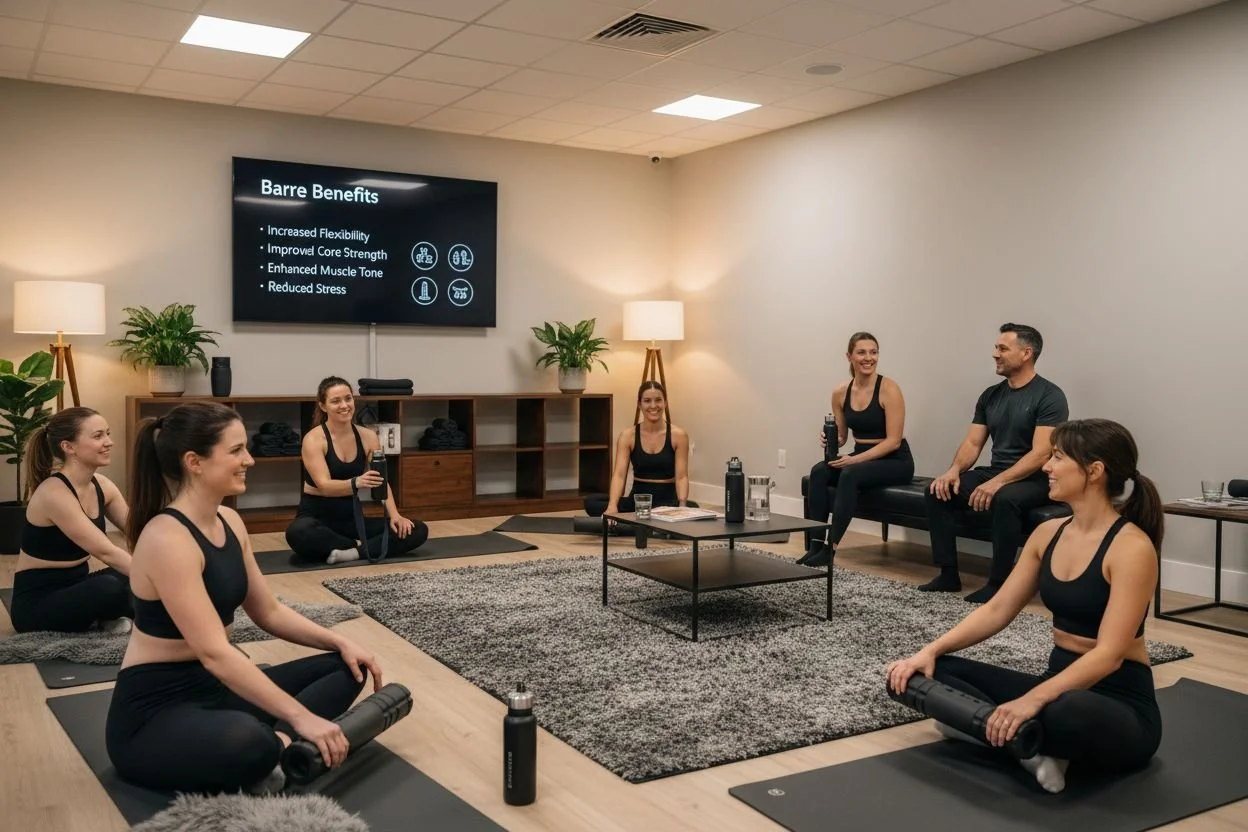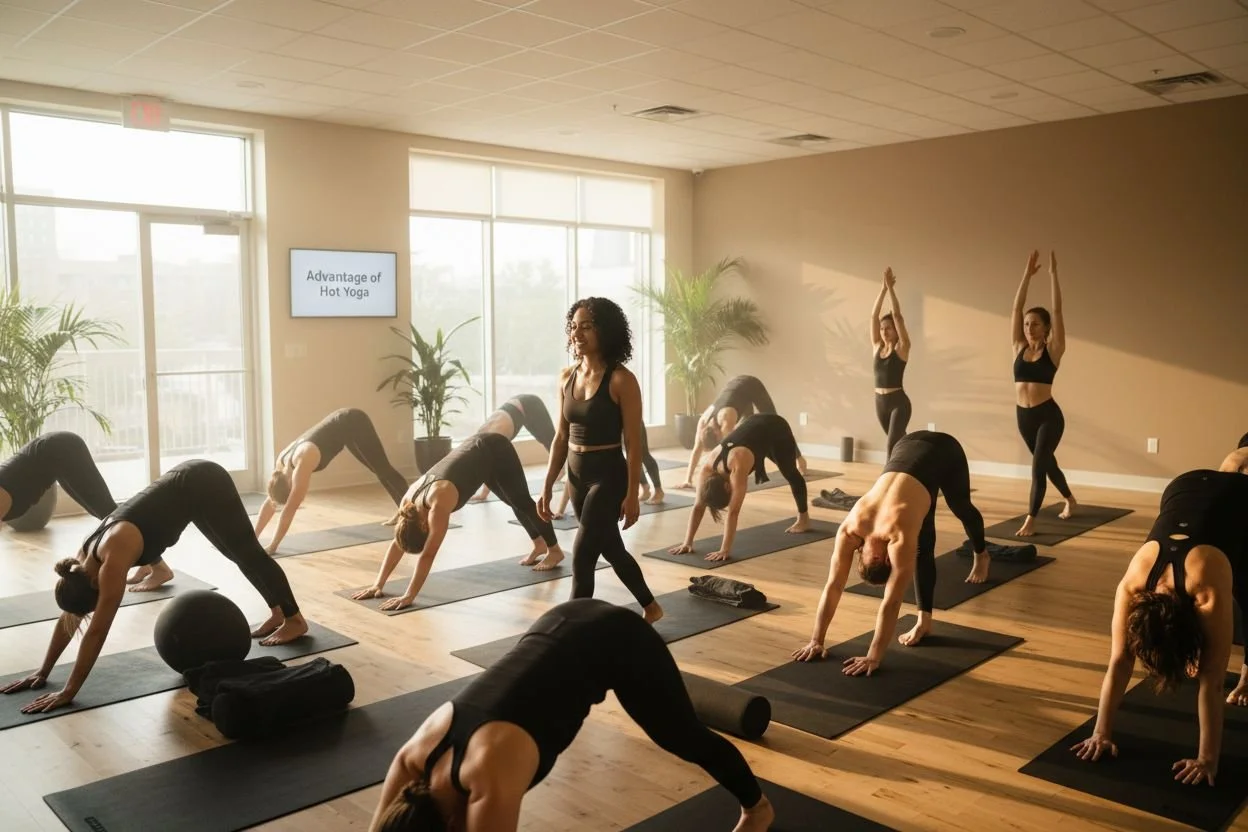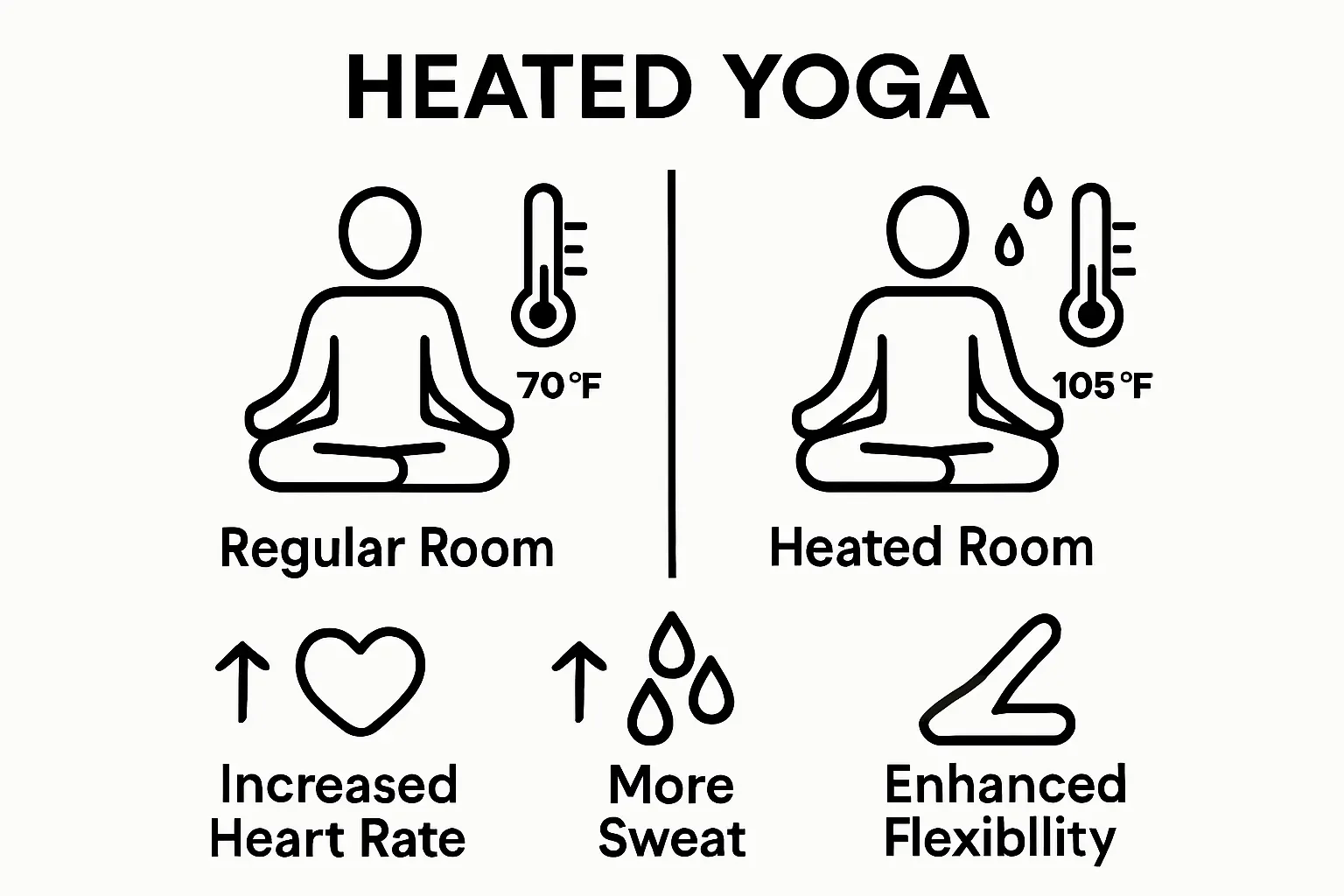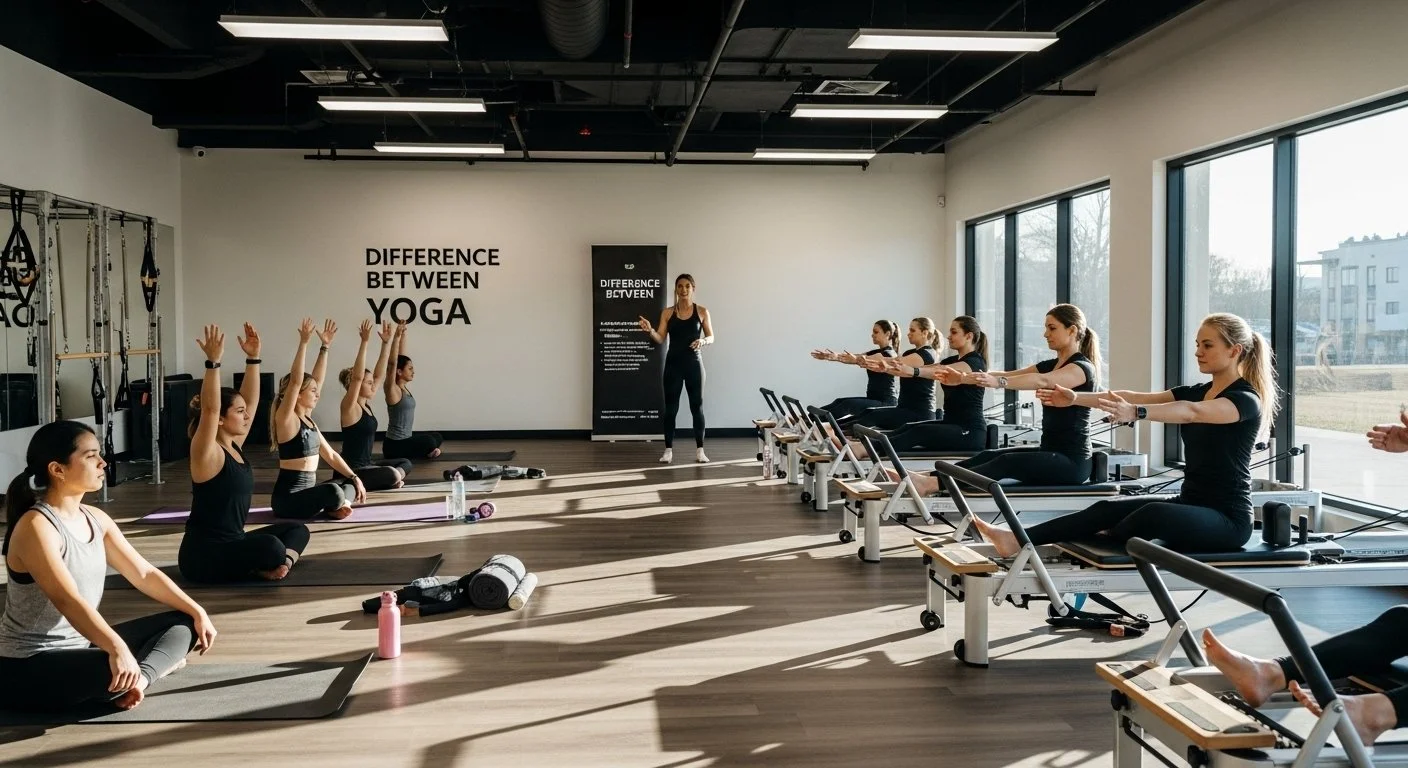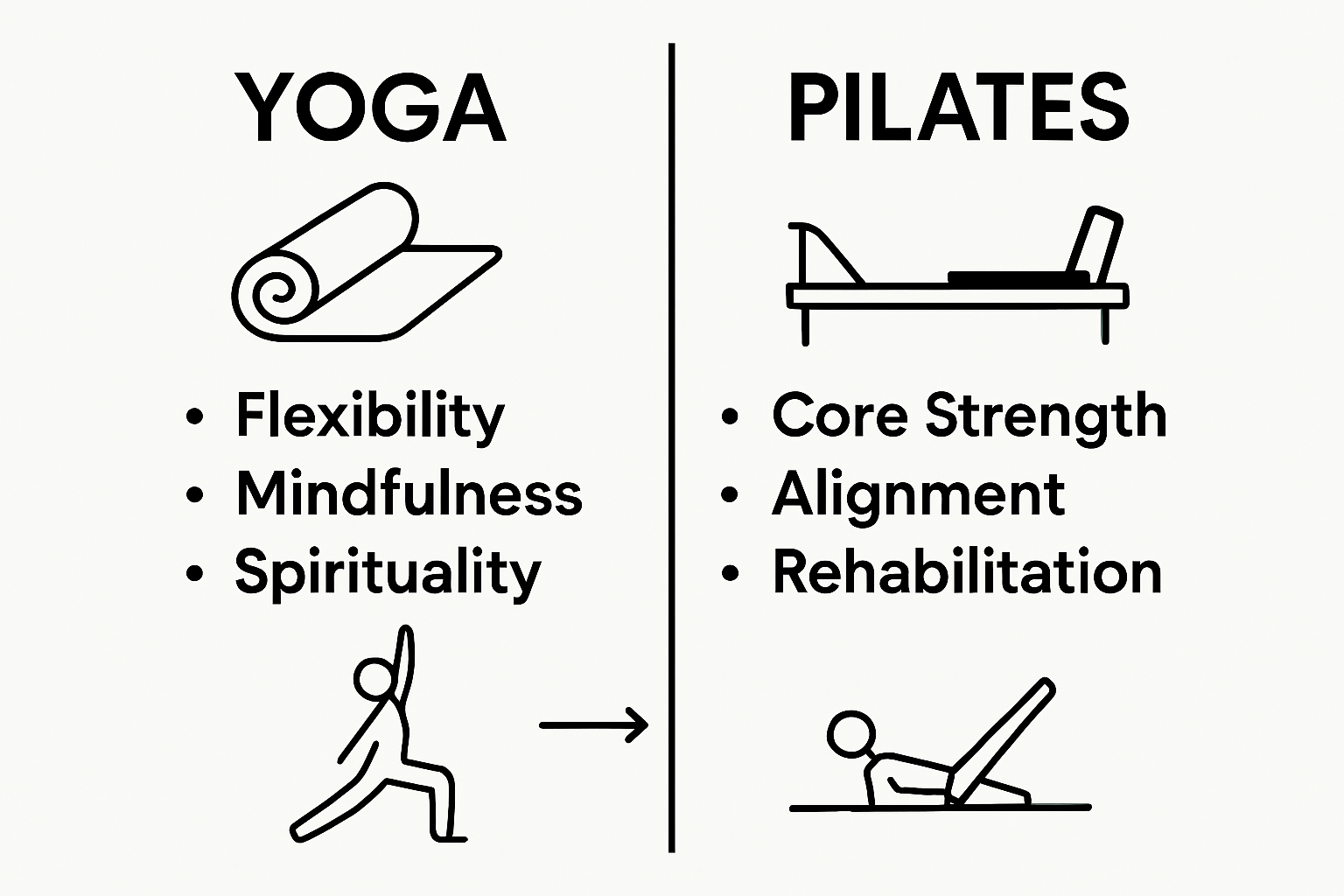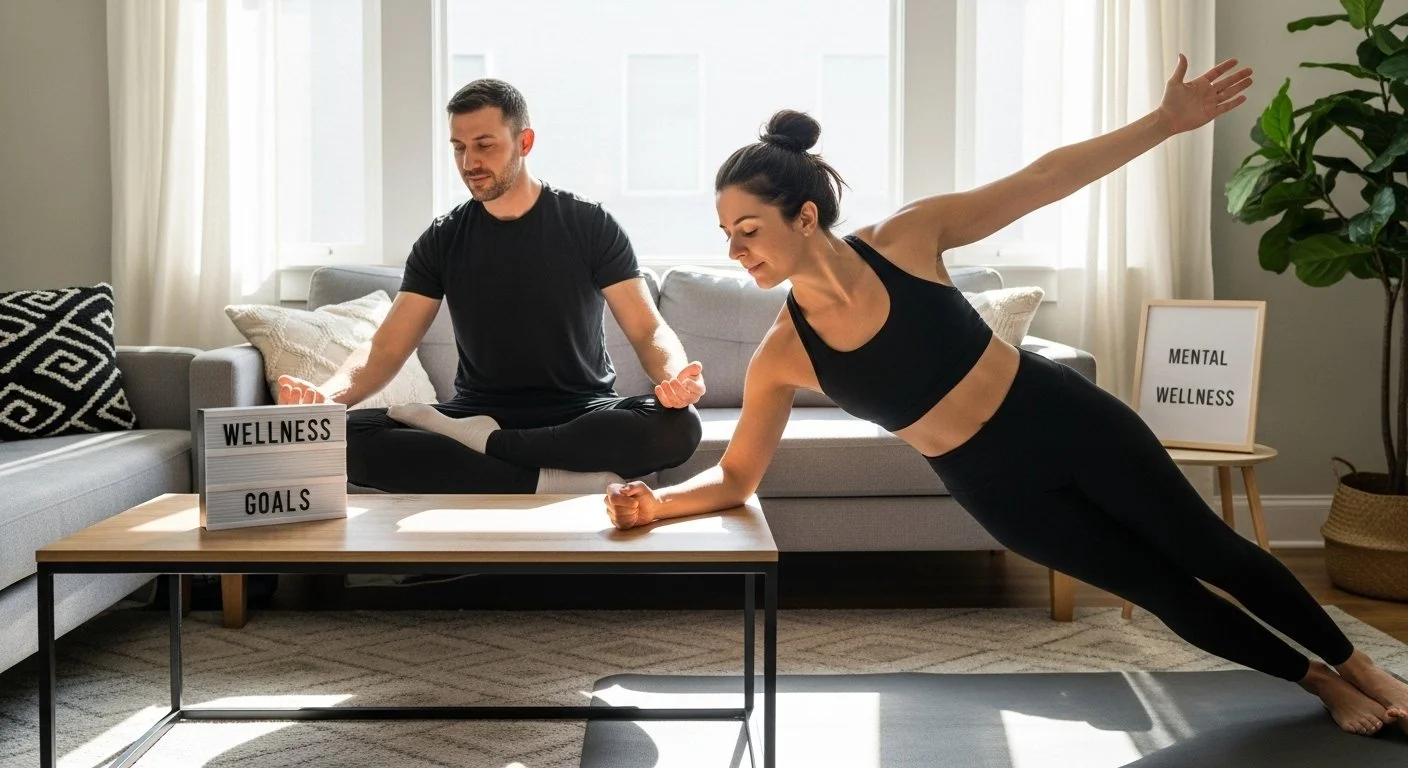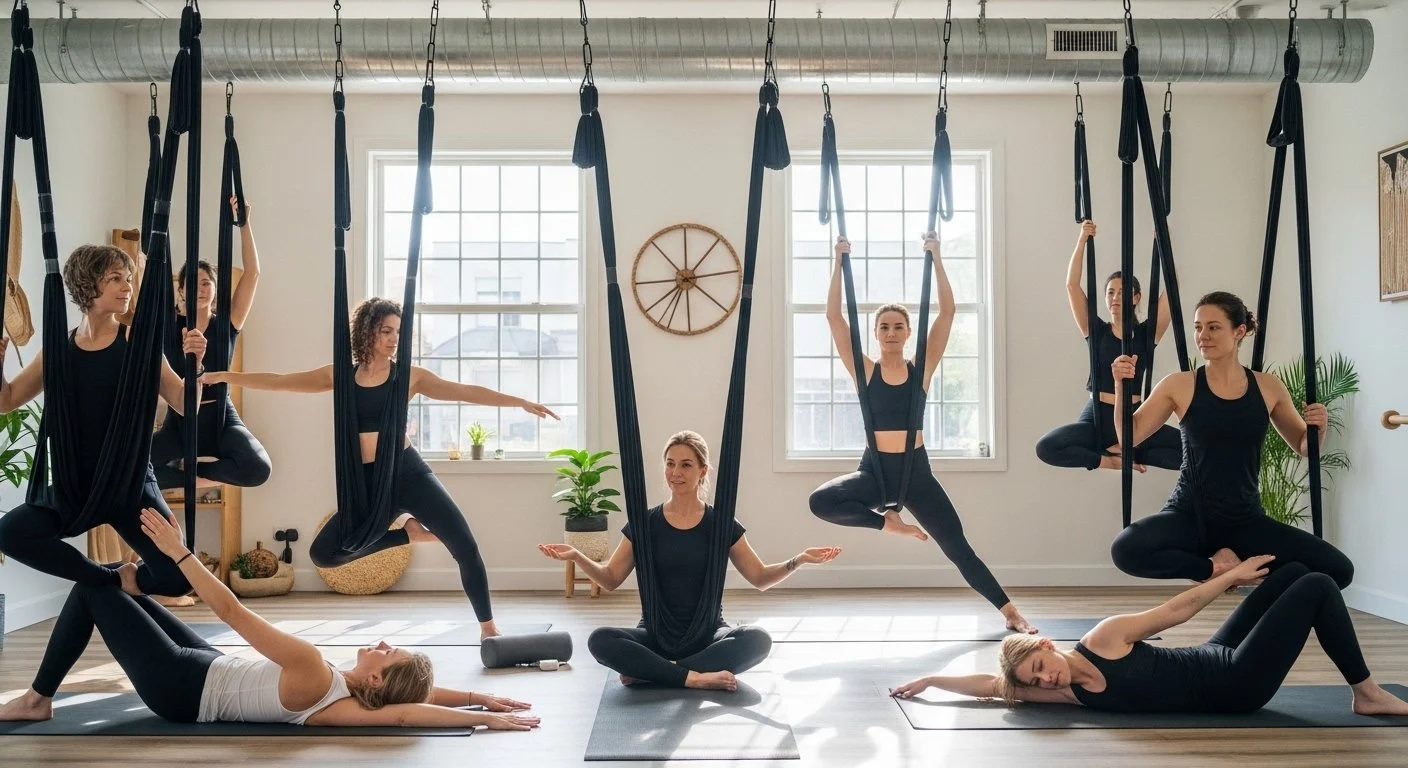Understanding Barre Workout Benefits for Holistic Health
Heather Rice
Barre workouts might look simple with their ballet-inspired moves and gentle flow. Yet underneath that graceful exterior lies a serious workout that torches calories and sculpts muscles in ways most routines never touch. Studies show that barre training can enhance muscle endurance and metabolic rate more effectively than traditional weight lifting. This method does more than shape your body—it sharpens your mind too, giving every session a surprising edge over old-school exercise.
Table of Contents
Quick Summary
TakeawayExplanationBarre workouts enhance full body conditioningThey combine ballet, yoga, and Pilates practices for comprehensive muscle engagement and endurance.Focus on isometric contractions for muscle growthControlled, small movements maintain muscle tension, promoting strength without excessive joint strain.Integrate mindfulness for mental wellnessBarre workouts help improve mental clarity and reduce stress through precise, intentional movements.Suitable for all fitness levels and conditionsBarre workouts can be adapted for prenatal, postpartum, athletic training, and rehabilitation needs.Encourage better posture and body alignmentRegular participation leads to improved core stability and general body awareness, enhancing overall posture.
What is a Barre Workout and Its Core Principles?
A barre workout represents an innovative fitness approach combining elements from ballet, yoga, and pilates to create a comprehensive strength training method. Unlike traditional exercise routines, barre focuses on small, precise muscle movements that challenge your body through sustained isometric contractions and high-repetition sequences.
The Ballet Inspired Foundation
Originating from professional ballet training techniques, barre workouts leverage a ballet bar as a primary support mechanism. Dancers discovered that these specific movements not only enhanced their performance but also provided exceptional full body conditioning. Our comprehensive barre workout guide breaks down how these techniques translate into an accessible fitness experience for everyone.
The core principles of barre workout center around muscular endurance and targeted muscle engagement. Participants perform repetitive, low-impact movements that focus on:
Developing lean muscle mass
Improving overall body alignment
Enhancing core stability
Building muscular endurance without excessive joint stress
Scientific Approach to Muscle Training
According to research published in the Journal of Strength and Conditioning Research, barre workouts effectively combine resistance training with bodyweight exercises. These movements create prolonged muscle tension, which stimulates muscle growth and improves metabolic rate more effectively than traditional weight training.
By integrating small, controlled movements with consistent tension, barre workouts challenge muscles differently compared to standard strength training. The method emphasizes precision over momentum, requiring practitioners to maintain perfect form while performing minute adjustments that create significant muscular engagement.
The result is a holistic fitness experience that builds strength, flexibility, and body awareness simultaneously. Participants can expect improved posture, increased core strength, and enhanced overall muscular definition through consistent practice.
Why Barre Workouts Matter for Physical Fitness
Barre workouts transcend traditional fitness approaches by offering a comprehensive physical conditioning method that uniquely addresses multiple dimensions of body performance and health.
Unlike conventional exercise programs that focus solely on muscle building or cardiovascular endurance, barre integrates multiple fitness disciplines to create a holistic training experience.
Muscular Conditioning and Body Transformation
The strategic design of barre workouts provides exceptional muscular conditioning through targeted, low-impact movements. Learn more about optimizing your fitness workflow and understand how these precise techniques can dramatically reshape your physique.
Research demonstrates that barre workouts generate remarkable physiological adaptations by emphasizing:
Muscle endurance through high-repetition sequences
Increased metabolic rate and caloric expenditure
Enhanced muscular definition without excessive bulk
Improved neuromuscular coordination
Biomechanical Benefits and Injury Prevention
According to research published in the International Journal of Sports Physical Therapy, low-impact exercises like barre significantly reduce injury risks while maintaining high-performance training standards. The controlled, mindful movements minimize joint stress and promote balanced muscle development across different body regions.
Barre's unique approach integrates principles from ballet, pilates, and yoga to create a comprehensive training methodology. By focusing on micro-movements and sustained muscle tension, practitioners develop exceptional body awareness and functional strength. This approach differs dramatically from traditional weight training by emphasizing quality of movement over quantity of repetitions.
To clarify how barre differs from traditional weight training, here is a comparison table outlining their main features and focus areas.
AspectBarre WorkoutsTraditional Weight TrainingMain FocusSmall, isometric movementsLarge, dynamic movementsMuscle EngagementSustained, full-body tensionTargeted, isolated muscle groupsJoint ImpactLow-impact, minimal joint strainCan stress joints with heavy resistanceForm EmphasisPrecision and controlled movementPower and movement quantityTypical EquipmentBallet bar, light weights, bodyweightBarbells, dumbbells, resistance machinesFlexibility & Posture BenefitHigh, enhances alignment and flexibilityModerate, depends on training styleAdaptabilitySuitable for all ages and fitness levelsMay require modifications for special needs
Ultimately, barre workouts represent more than just an exercise routine. They are a sophisticated training system that transforms physical capabilities while fostering a deeper connection between body, movement, and overall wellness. Practitioners can expect improved posture, increased flexibility, enhanced core strength, and a more balanced muscular structure through consistent engagement.
How Barre Workouts Enhance Mental Well-being
Barre workouts represent more than physical training. They offer a profound approach to mental wellness by integrating mindfulness, body awareness, and stress management techniques that extend far beyond traditional exercise methodologies.
Psychological Benefits of Mindful Movement
Explore how fitness practices can transform mental wellness, particularly through intentional movement practices like barre. The psychological landscape of these workouts centers on creating a deep mind-body connection that promotes emotional resilience and mental clarity.
Mental health benefits of barre workouts include:
Reducing stress through focused, controlled movements
Increasing endorphin production
Improving self-confidence through physical mastery
Developing mindfulness and present-moment awareness
Neurological Impact of Precision Training
According to research published in the Journal of Mind and Medical Sciences, mind-body exercise modalities like barre significantly impact neurological functioning. The precise, intentional movements require intense concentration, which stimulates cognitive processes and neural pathways.
By demanding sustained attention and intricate muscle control, barre workouts create a meditative state that interrupts cyclical stress patterns. Neuroplasticity research suggests that these focused movements can actually rewire brain circuits, promoting emotional regulation and reducing anxiety symptoms.
The rhythmic, controlled nature of barre exercises generates a unique psychological experience where physical challenge meets mental discipline. Practitioners report experiencing a sense of flow, where external stressors dissolve and internal awareness becomes paramount. This meditative quality transforms exercise from a purely physical activity into a holistic mental wellness practice that nurtures psychological resilience and emotional balance.
Key Concepts and Muscles Engaged in Barre Training
Barre training represents a sophisticated exercise methodology that strategically targets multiple muscle groups through precision-based movements. Unlike traditional strength training, barre focuses on creating comprehensive muscular engagement through sustained, controlled contractions that challenge the body's neuromuscular system.
Foundational Muscle Groups in Barre Training
Discover advanced techniques for muscle conditioning that maximize your body's potential through targeted muscle activation. Barre workouts systematically engage multiple muscle groups simultaneously, creating a holistic approach to strength development.
The primary muscle groups targeted during barre training include:
Quadriceps and hamstrings
Gluteal muscles
Core stabilizer muscles
Calves and lower leg muscles
Upper body muscle groups including shoulders and arms
Biomechanical Principles of Muscle Activation
According to research published in the Journal of Strength and Conditioning Research, barre training utilizes isometric contractions that create prolonged muscle tension without joint movement. This unique approach stimulates muscle fiber recruitment differently from traditional weight training.
The micro-movements characteristic of barre workouts generate intense muscular engagement through:
Sustained muscle tension
High-repetition sequences
Precise positional adjustments
Bodyweight resistance techniques
By integrating principles from ballet, pilates, and yoga, barre training creates a comprehensive muscle conditioning system that emphasizes quality of movement over pure mechanical repetition. The method challenges muscles through constant tension, promoting enhanced muscular endurance, improved body alignment, and functional strength development.
Unlike traditional strength training that focuses on isolated muscle groups, barre workouts create a synergistic approach to muscle conditioning. Practitioners develop a more balanced, integrated muscular structure that promotes overall body symmetry and functional movement patterns.
This table summarizes the primary muscle groups engaged in barre workouts and the key benefits each area provides.
Muscle GroupRole in Barre TrainingKey BenefitsQuadriceps & HamstringsSupport lower body movementsImproves stability & leg enduranceGluteal MusclesDrive core and hip extensionEnhances posture & lower body shapeCore StabilizersMaintain alignment and balanceIncreases core strength & balanceCalves & Lower LegAssist with balance and elevationImproves ankle stability & agilityShoulders & ArmsStabilize upper body during posesBuilds functional upper body strength
Real-World Applications of Barre Workouts in Wellness
Barre workouts transcend traditional fitness paradigms by offering versatile, adaptable training methodologies that address diverse wellness needs across different life stages and physical conditions. The precision and low-impact nature of these techniques make them uniquely positioned to support holistic health strategies.
Wellness Integration Across Life Stages
Explore comprehensive fitness strategies for different wellness needs that demonstrate the adaptability of mind-body exercise techniques. Barre workouts provide scalable training options suitable for individuals ranging from athletic professionals to rehabilitation patients.
Real-world applications include supporting wellness for:
Prenatal and postpartum fitness recovery
Athletic cross-training and injury prevention
Senior fitness and mobility maintenance
Rehabilitation and physical therapy programs
Corporate wellness and stress management initiatives
Holistic Health Transformation
According to research published in the National Institutes of Health, adopting mind-body exercise formats like barre can contribute significantly to overall health by supporting weight management, cardiovascular function, and improving quality of life.
The integrative approach of barre workouts enables practitioners to address multiple wellness dimensions simultaneously. By combining strength training, flexibility development, and mindfulness practices, these workouts create comprehensive health interventions that extend beyond traditional exercise models.
Unlike compartmentalized fitness approaches, barre training offers a nuanced method of physical conditioning that recognizes the interconnected nature of bodily systems. Practitioners experience not just physical transformation, but a holistic approach to wellness that nurtures mental resilience, emotional balance, and physiological adaptation.
Ready to Experience the Transformative Power of Barre at Amrita Yoga & Wellness?
Do you feel stuck in your wellness journey, searching for a workout that strengthens your body while uplifting your mind? Our article explains how barre delivers holistic benefits, from enhanced core stability and muscle conditioning to stress relief and emotional resilience. Many struggle with finding an inclusive, low-impact fitness solution that truly addresses both physical and mental health. At Amrita Yoga & Wellness, our barre classes are designed to support your unique goals, blending precision movement and mindfulness to help you build confidence and lasting well-being.
Join a welcoming community where you can access a wide range of holistic classes. Explore our barre and wellness offerings to unlock personal growth through movement and mindfulness. Take your first step by discovering how integrative fitness strategies can transform your daily routine. Prioritize your health and happiness today with support from Amrita Yoga & Wellness. Visit our main site now to sign up for a class and start your journey toward holistic well-being.
Frequently Asked Questions
What are the main benefits of barre workouts?
Barre workouts offer numerous benefits, including improved muscular endurance, enhanced core stability, better posture, and increased flexibility. They create a holistic fitness experience that promotes overall body awareness and strength without excessive stress on the joints.
How does barre differ from traditional weight training?
Unlike traditional weight training, barre focuses on small, controlled movements that create sustained muscle tension. This method emphasizes precision over momentum, leading to improved muscle engagement, better body alignment, and functional strength development.
Can barre workouts help improve mental well-being?
Yes, barre workouts can significantly enhance mental well-being. They promote mindfulness, reduce stress, and increase endorphin production, leading to improved self-confidence and emotional balance through intentional movement and focus.
Who can benefit from barre workouts?
Barre workouts are adaptable for various fitness levels and can benefit individuals ranging from athletes needing cross-training to those recovering from injuries. They are also suitable for prenatal and postpartum fitness, senior mobility maintenance, and corporate wellness initiatives.
Recommended
Barre Workout Step by Step: Achieve a Stronger Body — Amrita Yoga & Wellness
Master Your Barre Workout Workflow for Optimal Health — Amrita Yoga & Wellness
7 Reasons Why Combine Yoga and Pilates for Wellness — Amrita Yoga & Wellness
7 Essential Tips for Yoga & Fitness Beginners in 2023 — Amrita Yoga & Wellness
